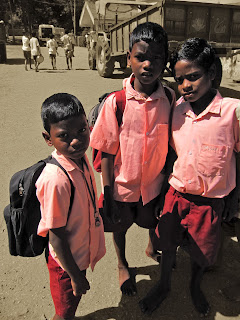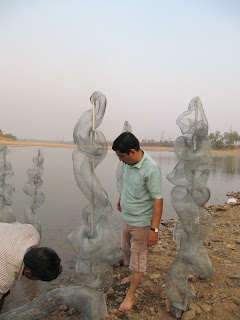Almost a year since and already a new set of people being part of Negotiating Routes: Ecologies of the Byways part IV
For me I am still somehow "caught in time". The memories or so it seems are still so real. Sharing my note that I never published then -
The project is gradually drawing towards its end, for me this has been a journey...perhaps it would be appropriate to say the beginning, of it, is now. Even if Doumahani and the people living here has interested me for some time, it's been only now that I have been able to observe them from such close range. I have made some friends...they laugh at me and often ask me on the boat...are you again going to take pictures today? :)
In the end/ or at this beginning I am forced to reflect back on the day when I was enthused to find out more about these people, and now had an excuse to do that more closely. But when its time for me to leave...to bundle up memories and let it stay in one corner of my mind for the time being, it becomes more difficult to believe in leaving...so I keep telling myself - I will be back.
In these couple of months, I have come to know Jamshedpur as never before...seen people at their work, and the importance of that work to sustain themselves. many of these tribals/ natives gave away their lands, or were ousted from it. In any case, many of these tribals are working as rejhas and kulis in what used to be their own lands.... some have turned into local farmers. For many of them it means crossing the rivers to reach the town, women carry heavy baskets of vegetables overhead that weighs anything around 60-80kgs.
There are industries besides the Tata Steel, UCIL (Uranium corporation of India Ltd.) in Jadugora, Limestone mining in forest regions of Bonda, that has been closed now. For these and many more the regions have had to be vacated, each day, there's a growing threat from the Naxals. Even as some find job opportunities in these companies, ie. only if they have the skills and training, for the others, it means evacuating their homes....











































